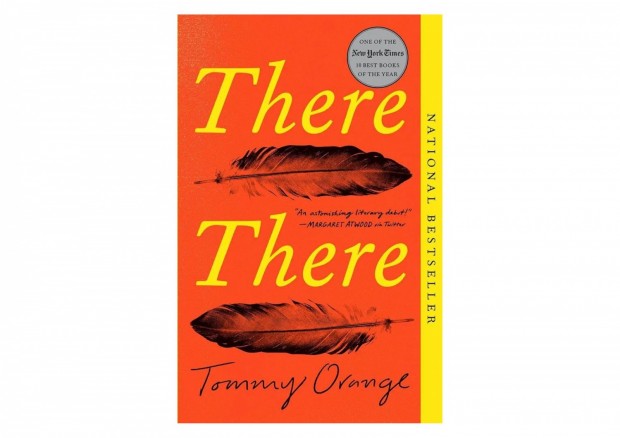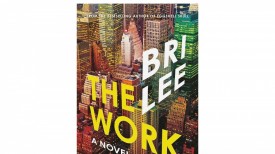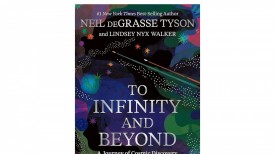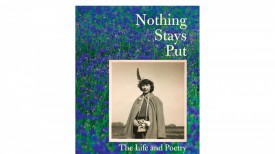'There There' by Tommy Orange Book Review: Navigating Urban Native America

Navigate Urban Native America with our review of 'There There' by Tommy Orange. Dive into a compelling narrative that explores identity, belonging, and the complexities of modern Indigenous life.(Photo : Amazon/Tommy Orange)
"There There" subtly intertwines the narratives of Jacquie Red Feather, Dene Oxendene, and 14-year-old Orvil, who fatefully congregate at the Big Oakland Powwow. These voices illustrate the novel as they reveal the reality of being an urban Native American, as they face the complicated history of their tribe and the challenges of identity, religion, and sacrifice.
Praised by The New York Times as a revelation, the book is written so that it pulsates with life and uses both poetry and rage to tell a story that will be both haunting and memorable and offer a deep insight into the complexity of human existence.
The Author
Tommy Orange, born in Oakland, California, in 1982 as a son to a White mother and Native American father, stumbled into writing for two decades while working at a bookstore. He took the impressions of his great heritage to create a novel that revolves around urban Native American lives.
In 2018, the book came out and was widely praised by many critics, earning it awards and even a finalist position in the Pulitzer Prize in Fiction. Orange, a fellow of a MacDowell fellowship and an MFA recipient, is still teaching creative writing.
Portrait of Hope and Resilience
According to The Guardian, the book explores the lives of urban Native Americans in Oakland, California, referencing Gertrude Stein's line about the city's loss of identity. Through interconnected characters like Tony Loneman, Edwin Black, and Dene, Orange depicts the complexities of contemporary Indian life, juxtaposing optimism with violence and despair.
Despite the characters' challenges, the novel ultimately offers a message of hope and resilience, exemplified by the relationship between Jacquie and Harvey, suggesting that amidst turmoil, decency can prevail. The reviewer concluded that Orange's portrayal of the Native American experience is raw and humane, leaving a lasting impression of fragility and strength.
READ ALSO: 'The Great Divide' by Cristina Henriquez Book Review: A Panoramic Tale of the Panama Canal
Refreshing and Relevant Portrayal of Modern Native American Life
A review by E.F. Sunland said the book is a compelling exploration of contemporary Native American life in Oakland, California, leading up to a powwow. Orange deftly navigates themes of identity, culture, and violence through 12 interconnected characters.
The book's prologue provides essential historical context, seamlessly blending serious history with subtle character development throughout the rest of the narrative. The reviewer stated that despite minor pacing issues during the climax, Orange's innovative structure and poignant storytelling make the book a powerful and relevant read.
Overall, the book gives us a new perspective on modern Native characters by overthrowing the stereotypes and clarifying their role in our daily lives. It is an excellent book that combines fact and fiction, balancing depth and entertainment.
Identity and Community
An article by Kirkus Reviews articulated that the book delves into the lives of 12 diverse characters leading up to the Big Oakland Powwow. Set in Oakland, California, Orange offers a rich portrayal of contemporary Native American experiences, transcending stereotypes and revealing the multifaceted identity of 'Urban Indians.'
The reviewer elucidated that through a range of perspectives, from aspiring filmmakers to individuals struggling with addiction and loss, Orange explores themes of community, identity, and history. With propulsive narrative force and vivid prose, the novel navigates the complexities of Native American life in modern America.
Orange's portrayal is both poignant and powerful, shedding light on the invisible struggles many face within the community. Ultimately, the book serves as a compelling reflection not only of Native American experiences but also of the broader complexities of American society.
RELATED ARTICLE: The Role of Book Culture in the Era of Late-Stage Capitalism
© 2023 Books & Review All rights reserved.
Popular Now
1
'The Covenant of Water' by Abraham Verghese Book Review: An Enchanting Story of Generational Curses and Medical Marvels

2
Kristi Noem Reveals Killing Her Dog and Goat in New Book ‘No Going Back’

3
'Dogland: Passion, Glory, and Lots of Slobber at the Westminster Dog Show' by Tommy Tomlinson Book Review: Unraveling the World of Show Dogs and Human-Canine Bonds

4
'Love Life' by Matthew Hussey Book Review: An Essential Guide for Navigating Relationships

5
5 Expert-Recommended Books to Fight Work Burnout and Cultivate Healthy Habits

Latest Stories
Book Reviews
'Love Life' by Matthew Hussey Book Review: An Essential Guide for Navigating Relationships

Book Reviews
'Dogland: Passion, Glory, and Lots of Slobber at the Westminster Dog Show' by Tommy Tomlinson Book Review: Unraveling the World of Show Dogs and Human-Canine Bonds

Book News
Elliot Mintz Chronicles Journey With John Lennon and Yoko Ono in New Memoir ‘We All Shine On’

Book News
Rebel Wilson's UK Book Release Sparks Controversy Over Redacted Section About Sacha Baron Cohen

Book News
Audible and Pottermore Publishing Team Up to Release New ‘Harry Potter’ Audiobooks With Over 100 Voice Actors










